How to Dry Sourdough Starter (and Other Storage Methods)
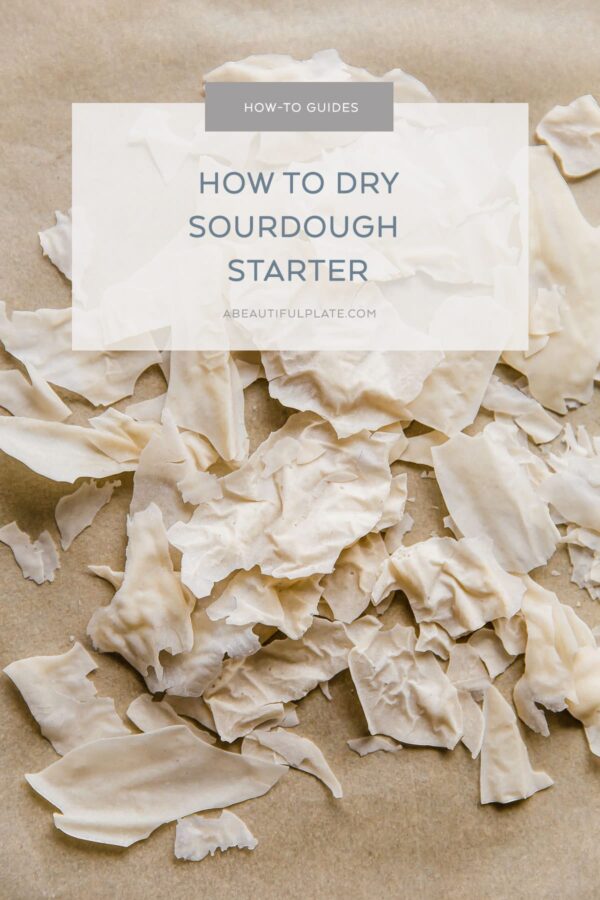
The most frequently asked questions about sourdough starters are regarding storage and general maintenance.
Specifically, how to store your sourdough starter if: 1) you don’t bake bread regularly and don’t want to feed your starter on a daily basis, 2) are going out of town or wish to take a break, or 3) wish to preserve or gift it to others.
While I generally recommend keeping your sourdough starter at room temperature if you bake regularly, there are many instances in which you’ll need or want to take a break from regular feedings.
Today I’ll be covering my favorite long-term (drying your sourdough starter) and short-term (refrigeration) method for storing a sourdough starter.
Note: It is important to have a vigorous, lively sourdough starter (strong enough for baking) before drying or refrigerating it. If you have been storing your mature starter in the refrigerator, I recommend transferring it to room temperature and giving it several regular feedings prior to completing the steps below.
If you’ve already established a strong sourdough starter and are experiencing troubleshooting issues, be sure to check out my Sourdough Starter Troubleshooting Guide, as well as my Sourdough Bread Troubleshooting Guide for more guidance.
Reasons to Dry Your Sourdough Starter:
Once you have an active, vigorous sourdough starter, I highly recommend taking the time to dry and preserve a portion of it from time to time. I always keep a jar of dried sourdough starter in my pantry for the following reasons:
- Back Up – it can take weeks to establish a strong sourdough starter, so it only makes sense to create a back-up in case anything happens to your main starter (accidents can happen, sourdough starters can be thrown out, used in their entirety, etc.).
- Long Term Storage – dried sourdough starter can be stored indefinitely if kept in a cool, dry place and can be revived to its original strength in just a few days (how to revive dried sourdough starter). if you wish to take an extended break from sourdough baking, this is a great way to preserve your original starter’s strength.
- Gift to Friends and Family – dried starter is the easiest way to gift it to friends and family (without the time required to make one from scratch). dried starter can be easily revived and used for bread baking in less than a week.
How to Dry Sourdough Starter:
Step One: Complete a regular feeding. Once your starter is lively and bubbly (ie. reached peak activity), transfer the discard to a large sheet of parchment paper (or silicone baking mat). Unless you are taking a long-term break from baking, be sure to reserve a normal quantity of your starter for regular maintenance.
Step Two: Spread the sourdough starter into a very thin layer using a large offset spatula or bench scraper. The thinner the layer, the faster and more thoroughly the sourdough starter will dry out.
Step Three: Allow the sourdough starter to dry at room temperature for at least 24 to 48 hours (total time will vary depending on humidity level and may take longer). No moisture should be present and it should be very brittle once thoroughly dry.
Step Four: Break the dried starter into small shards and transfer to a glass jar. Label with a date and cover with a tight-fitting lid. Store in a cool, dark place. Dried sourdough starter can be stored for years as long as it kept away from heat and moisture.
At this stage, you can gift a portion of the dried starter to friends and family. I recommend always keeping a portion of dried starter in your pantry as back-up. You don’t need much!
Short-Term Storage Options:
If you are traveling out of town or bake infrequently, the best short-term storage method for sourdough starters is the refrigerator. Cold temperatures slow yeast and bacteria activity, and will naturally extend how long your starter can sit between feedings.
Note: Low hydration starters (80%-90% hydration) are generally slower in activity than high hydration starters (100% or higher hydration levels) as wild yeast and cultures have reduced mobility when less water is present. This can be a helpful trick to remember if you wish to store your starter in the refrigerator for more than a week or two without a feeding.
I don’t generally recommend continuous long-term refrigeration as it can change the balance of wild yeast/lactic acid bacteria and yield inconsistent results when baking. However, figure out what works for your schedule and the type of bread you wish to bake!
How to Refrigerate Your Sourdough Starter:
Before refrigerating your sourdough starter, discard a portion and give it a regular feeding. Allow the mixture to sit at room temperature for roughly 1 hour before transferring it to the fridge.
Once you are ready to resume regular feedings or bake with your starter, remove it from the refrigerator and allow it to sit at room temperature (ideally between 74°F-78°F/23°C-25°C) until it is bubbly and has reached peak activity. Continue with regular feedings and observe its activity.
Depending on how long it has been refrigerated, a refrigerated sourdough starter may require an additional 2 to 3 regular feedings at room temperature before it has resumed regular activity levels and is strong enough for baking sourdough bread or sourdough pizza.
Even if you bake infrequently and regularly store your sourdough starter in the refrigerator, it is important to give it fairly regular weekly feedings (discarding a portion) to keep it healthy and strong.
If you’re looking for additional sourdough baking resources, be sure to check out the following:
- How to Revive Dry Sourdough Starter
- Sourdough Bread Baking Troubleshooting Guide
- Sourdough Starter Troubleshooting Guide
- Artisan Sourdough Bread Recipe + Step-By-Step YouTube Video
- Kalamata and Castelvetrano Sourdough Recipe
- Sourdough Pizza Dough
- Favorite Sourdough Bread Tools and Resources
- How to Store, Freeze, and Refresh Bread

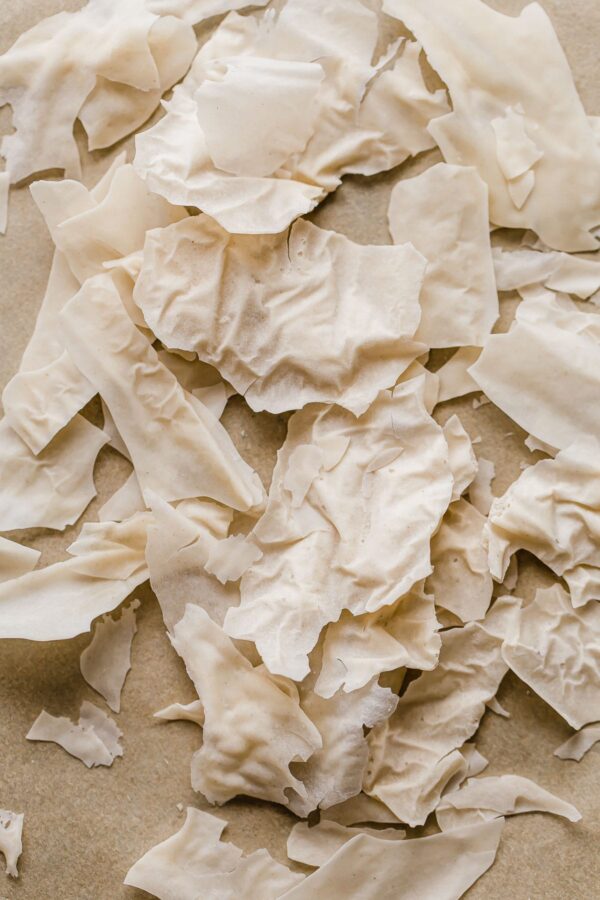
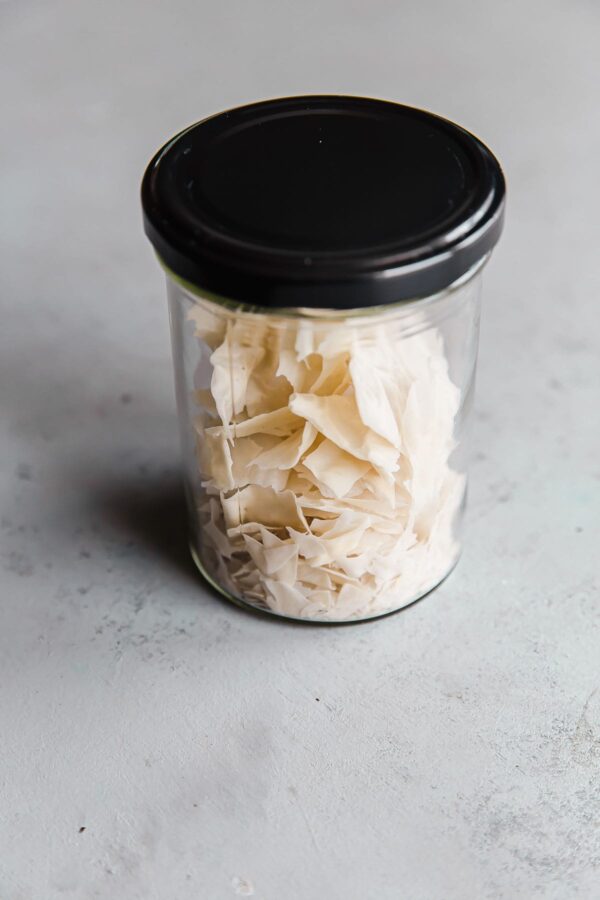
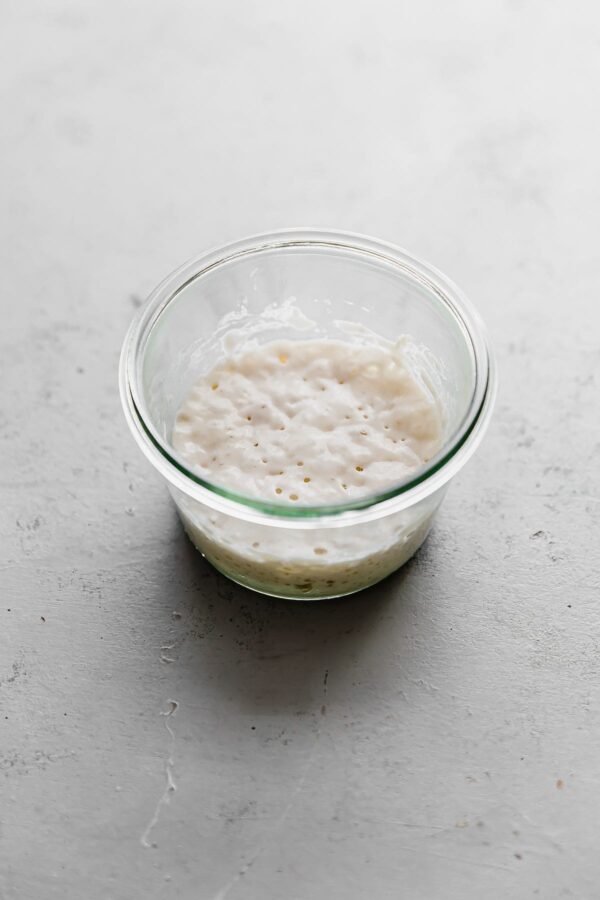
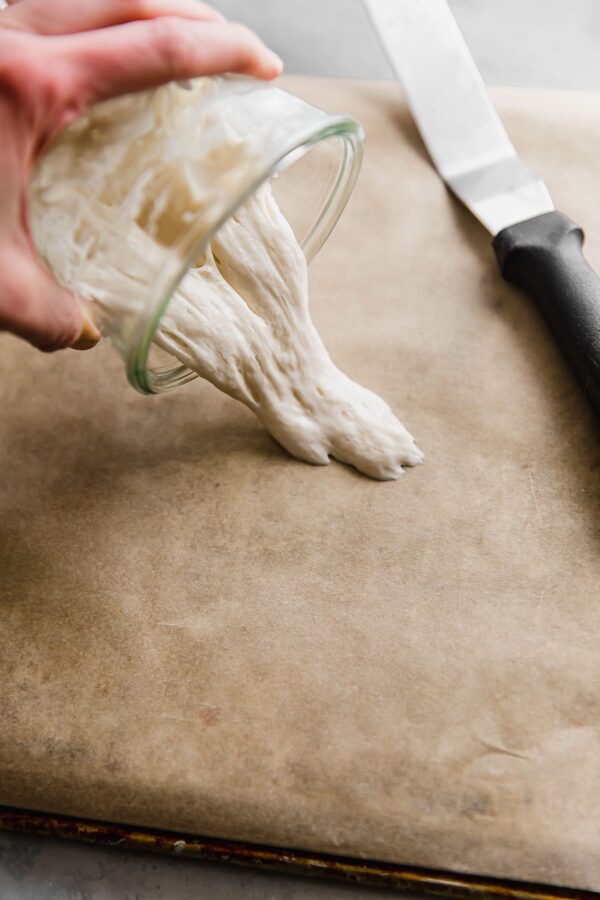
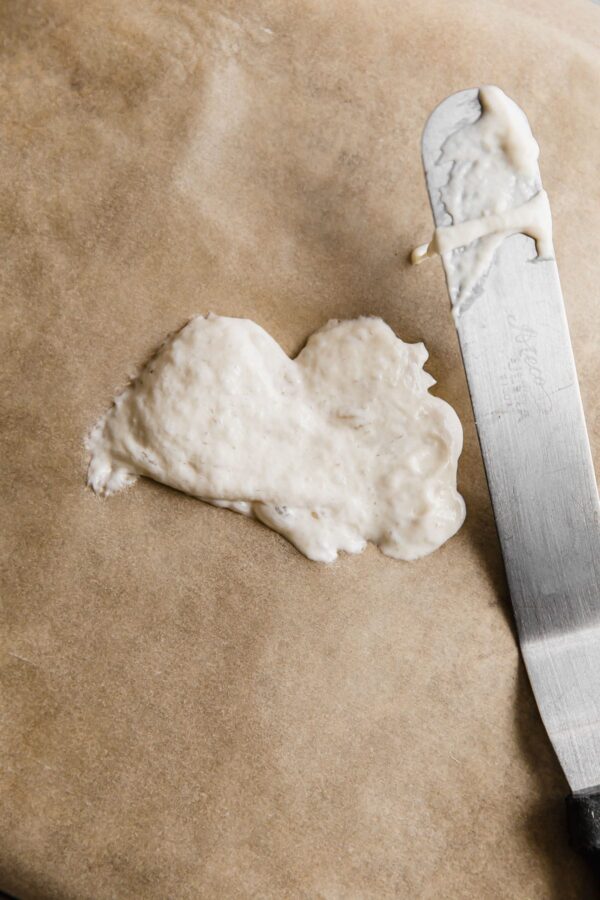
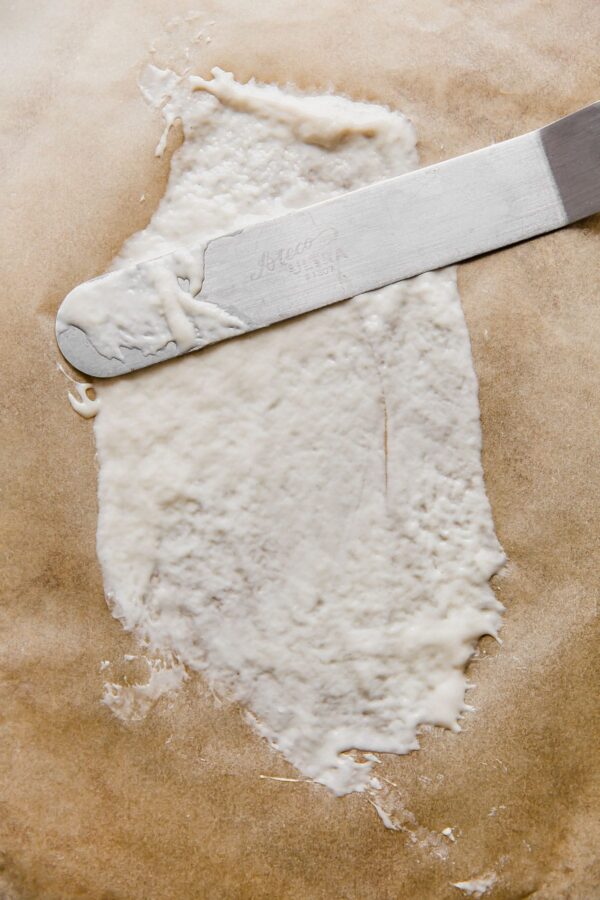
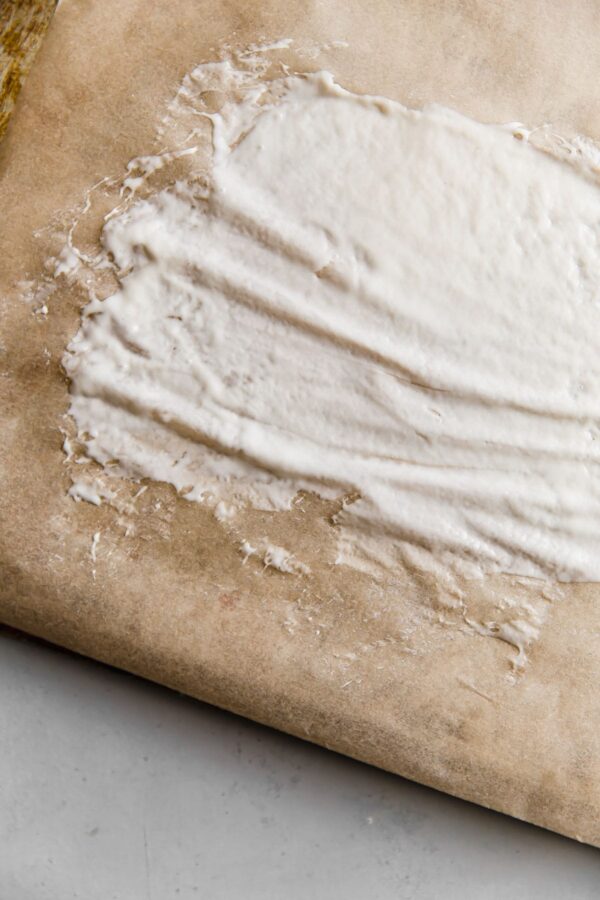
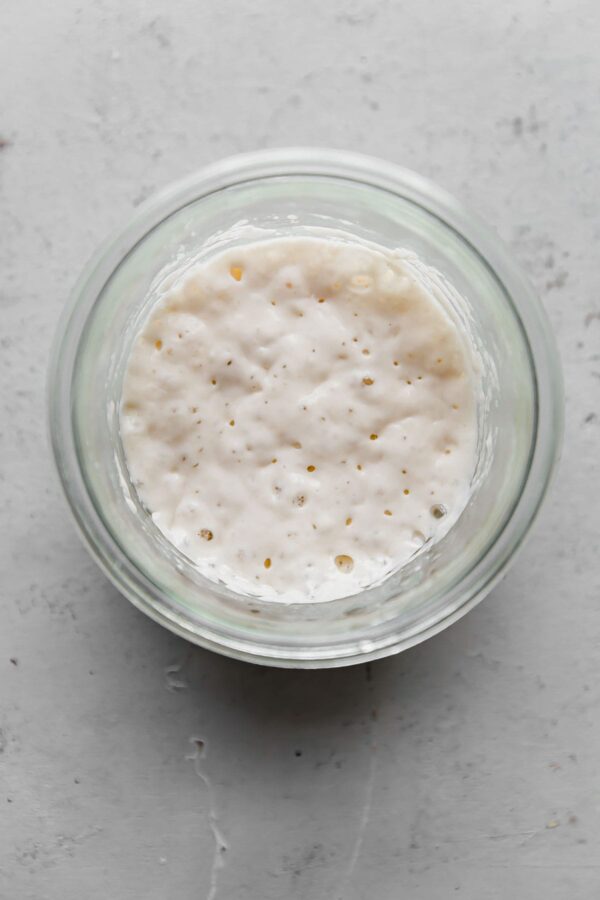
10 Comments on “How to Dry Sourdough Starter (and Other Storage Methods)”
how much do i feed a starter to keep it healthy. my starter is 2/3 of the way up the jar
Hi Sue – check out this post for more information. I can’t give specifics based on what you’re describing (it doesn’t really provide me with any information). You need to feed the starter based on its activity and how often you want to bake.
My sourdough jar exploded this morning. I fed it yesterday and I guess I didn’t use a large enough jar. The culture still looks good – can I still use it?
As long as there are no glass pieces in it, yes you can definitely still use it. Make sure you are not closing any lid – it should be askew or resting on top (not airtight). But if it just expands over the top, that’s not a problem at all – just a mess to clean up.
I just “revived” my sourdough starter after freezing it for around 6 months. Frozen in a glass jar with a tight fitting lid, I let it warm to room temp, liquify and began feeding it twice a day. It immediately showed signs of life, bubbles, and continued to activate with each feeding. After four days, the starter was better than ever and I baked two loaves of bread. My starter was about two years old and I had never attempted freezing or reactivating. I’m pleased with my easy, successful attempt and I’m looking forward to using this method to pause my starter especially when we are traveling/away from home for a stretch when feeding the starter is complicated.
This is great! I might have to update my guide to also share this method!
This works! My daughter was able to revive the dried started I gave her last year from starter she had originally made from scratch ?. I tried to revive some once but after reading this I see I didn’t give it long enough. When it still looked flat after two days I gave up. Fortunately I didn’t throw the rest of the dried starter out.
I would like to add that since I only bake once a week, my starter lives in the fridge. I give it a little flour and a little water once a week between bakings and let it sit out for several hours. I also give it a little flour and water and let it sit out again for several hours before using it to bake. I ask whoever is feeding my cat to feed my starter once when I’m away for a week.
Sourdough starter is a lot more forgiving than one would think. I never measure or weigh anything! I would never do this if I had to! Always have beautiful results!
This is so helpful! As always, thank you for the well written and easy-to-follow posts. Your sourdough recipes and tips are my go-to!
Great post and I’ve dried my discard and stored it away. Looking forward to the instructions on how to reconstitute it! I’m on my 43rd sourdough loaf since last May. The initial loaves were meh, but when I came upon your recipe and got the Challenger pan, then things started to really improve. Thanks!
So happy to hear this Cindy! I’ll be getting the guide up on how to revive it this week, so check back soon. You can also subscribe to my newsletter and you’ll be notified of the new post. I’m so happy that my recipe (and the Challenger Pan – which is my absolute favorite!) has helped you.